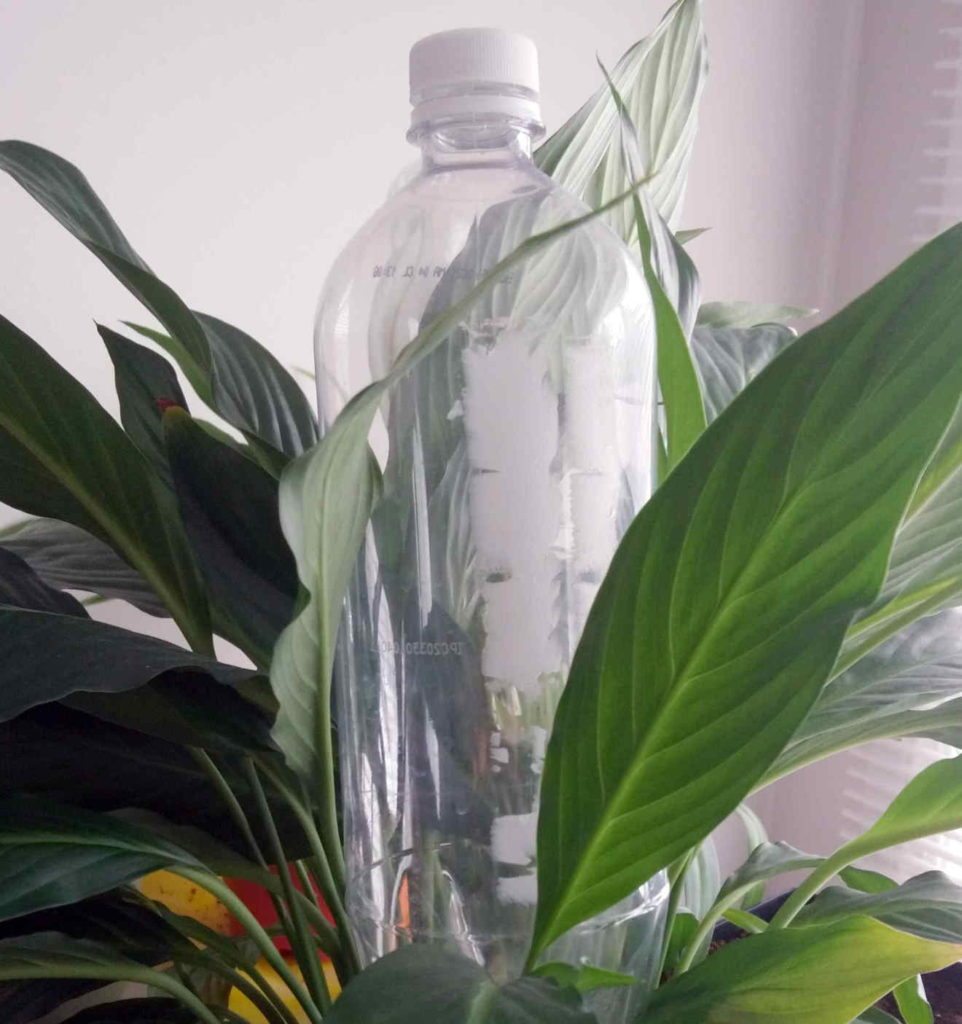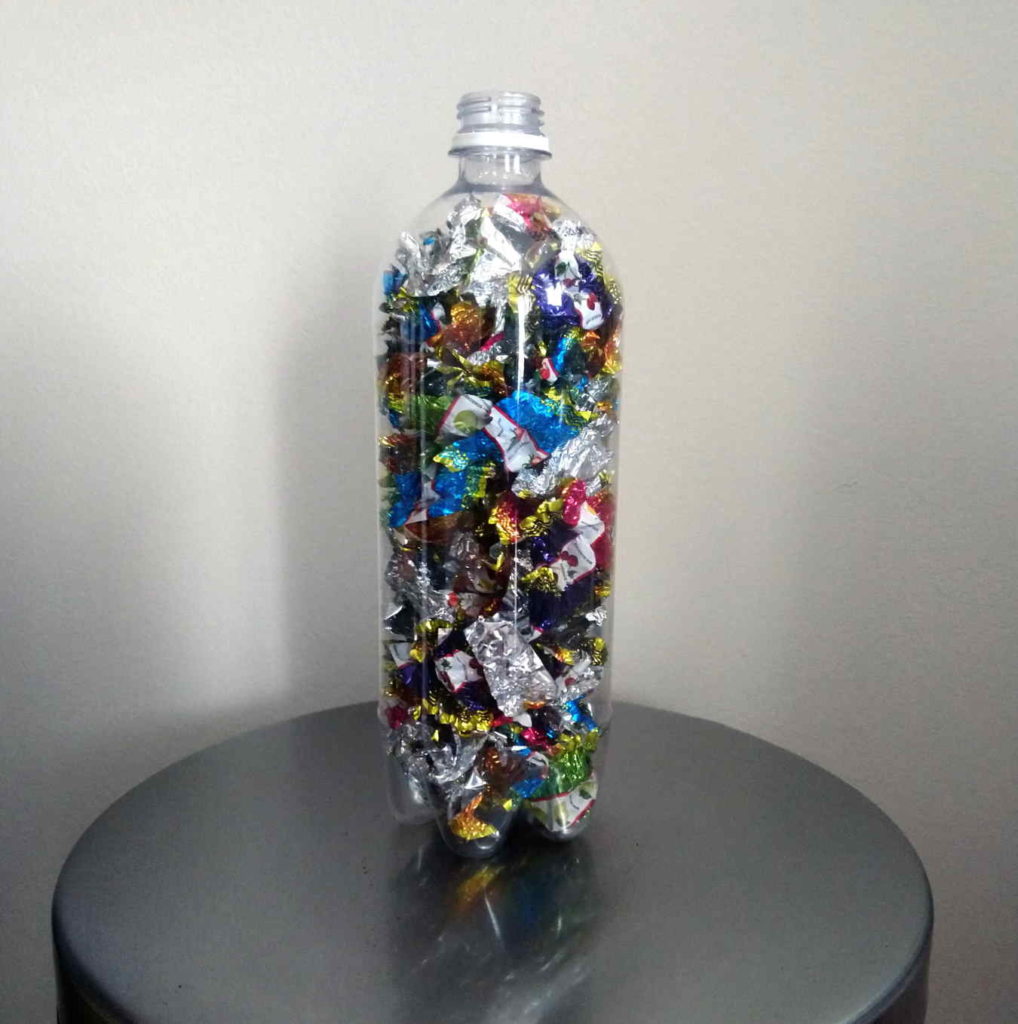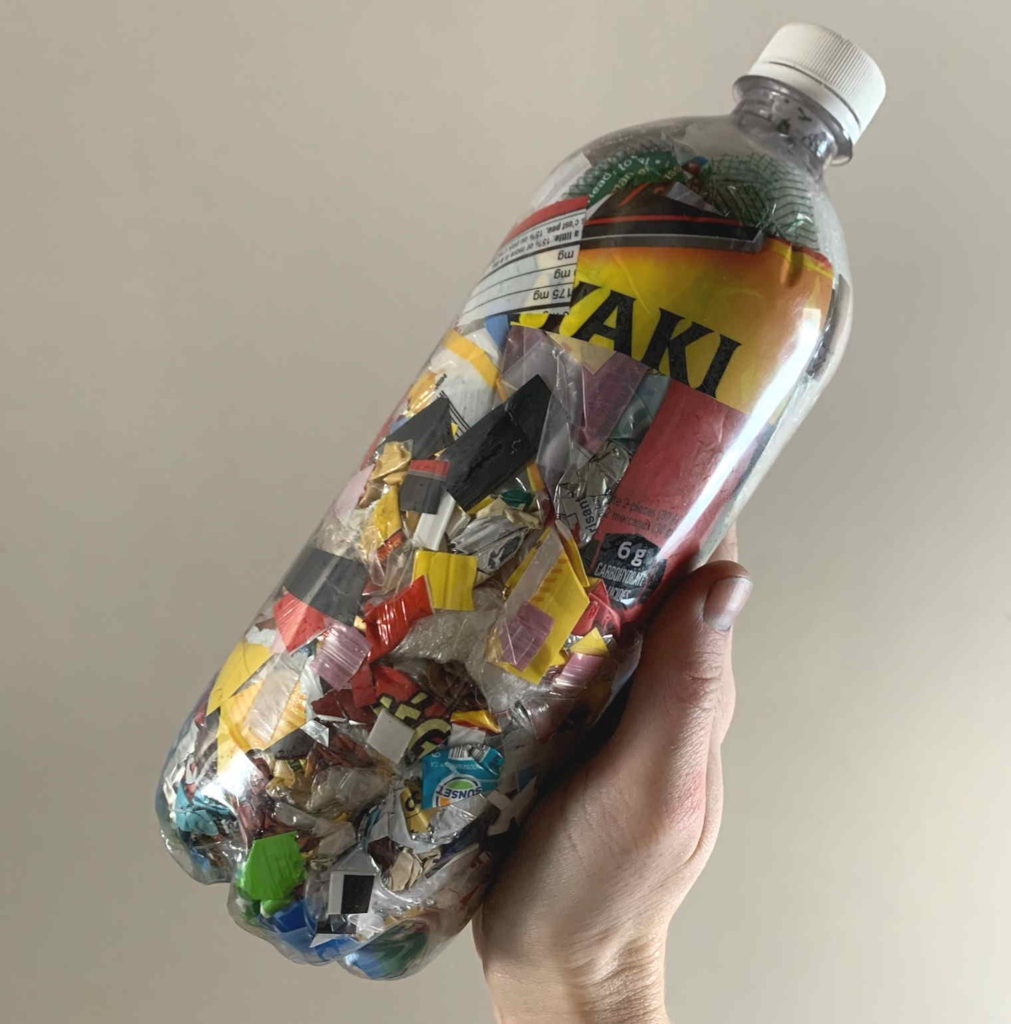We’re always talking amongst ourselves at Waste Free Edmonton about waste free tips, new evolutions in waste management, or cool ideas to reduce waste. A mention of an ecobrick drew my attention and drove me to investigate more. An unremarkable plastic bottle like any other I see in the grocery store, filled to the brim with a patchwork of overlapping scraps of colourful plastic. Ecobricks seemed like an interesting way to divert the amount of unrecyclable plastic I throw away, and the tools I needed to start were (mostly) things I already had.
Ecobricks are a way to minimize the environmental impact of plastic. By encasing small amounts of unrecyclable plastic in a sealed container, it keeps the plastic garbage out of a landfill, natural environment, or animal’s stomach. It can also prevent the leaching of microplastics into waterways. Not only that, but with enough ecobricks, larger structures and objects can be assembled and built!
The method is simple. Clean and dry unrecyclable plastic, cut it into smaller pieces, stuff it in a plastic bottle, and pack it down with a long stick. Rotate the bottle as you tamp it down to have an even distribution of plastic around the bottle. Once you can’t fit any more plastic inside and the bottle feels solid to the touch (or weigh it), cap it and you’re done.

Planning started weeks ahead, with the collection of the unrecyclable plastic. I hung onto chip bags, peeled labels off containers, and put aside the occasional candy wrappers. The journey also started with a bit of irony — to have an ecobrick, I needed a plastic bottle. Buying a one litre bottle of sparkling water that I otherwise wouldn’t. I aimed for a one litre, cylindrical bottle that would be an even building block, with no sloping sides, etching, or raised type. Another thing I had to remember was not to throw away the lid, a hard habit to break.
Once I had an empty bottle, a heap of plastic, and a long dowel, I was ready to go. It was amazing to see a big bag of plastic food bags and labels, occupying a large volume when I put them aside for an ecobrick, gradually get crushed into a smaller space without any real effort. I began to worry that I might not have enough plastic to fill the ecobrick with.
Cutting up all the plastic was also a meditative experience. It made me think about a number of things:
- While I didn’t make the plastic, I did purchase it. Was there a plastic free alternative I could have chosen instead?
- There were nonrecyclable plastic labels from recyclable containers. Is a product truly recyclable if not all of its components can be recycled?

There are a few ways to determine whether your ecobrick is finished: squeezing the bottle to test your grip strength, putting weight on it to see if the bottle bends, or simply eyeballing it. Once it’s done, just cap it! Having gotten used to the feel of an empty plastic bottle over the last couple decades, the heft of a completed ecobrick is something totally new.
Tips:
Cleaning plastic was tougher than I thought. At the beginning, I would swish hot, soapy water around the bag to clean it out. As it dried, I realized that wasn’t enough. There was always grease and salt left behind. I began inverting the bags and wiping down the inside with a cloth, cleaning and drying them at the same time.
The bottom of the ecobrick is the trickiest part. Much like actual construction, you need to start off with a solid base. In this context, finding the right plastic was critical. If the plastic was too large, it would be harder to tamp down with my dowel, and I didn’t cut my plastic small enough on my first attempt. I chose candy wrappers on my second try, which are small, hard plastic, consistently sized, and in enough quantity to ensure symmetry all around the base.

I learned some important lessons in the making of my first ecobrick.
Unrecyclable plastic is far more common than I previously believed. Maybe it’s because we dispose of unrecyclable plastic so quickly, while recyclable plastic lingers in our blue bag for longer, but forcing myself to hang on to chip bags and wrappers made me look at my role in bringing them into my house more critically. I was diverting plastic away from the trash, but not exactly reducing my consumption.
Creating an ecobrick uses a lot of unrecyclable plastic, and cutting it all up takes time. Seeing familiar brands over and over grew as tiring as the repeated snip of the scissors. Major brands like Coca-Cola, Nestle, Loblaws weren’t helping me pack my ecobrick, they were making more disposable plastics that are intended to be landfilled.
It was a fun exercise, was an introduction into a new way to divert unrecyclable plastic waste, and I may make another one. But at the same time, the best outcome would be no ecobrick at all, in a future where plastic is used responsibly and not polluting our environment.
Resources:


What is the use of an Ecobrick?
Their primary use so far seems to be in building and construction — from retaining walls to community gardens or even furniture like chairs and shelving. Having made one, they are truly solid and could likely be used for much more.